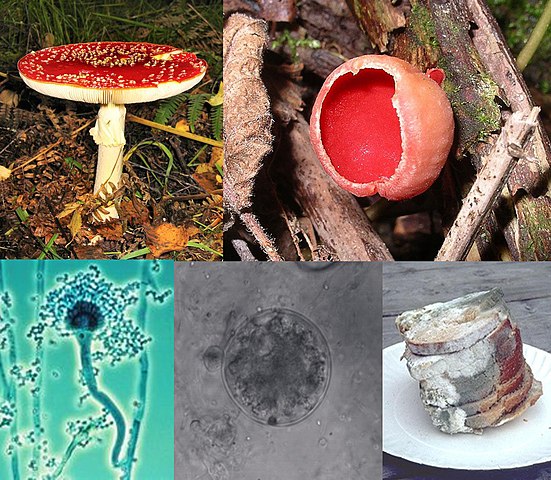Fungi play a crucial role in ecosystems, contributing to various ecological processes and influencing the health of both terrestrial and aquatic environments. While some of their impacts are well-known, there are also surprising ways in which fungi affect ecosystems. Here are some of these surprising influences:
1. Decomposition of Tough Substances:
- Fungi are known for their role in breaking down organic matter, but some species specialize in decomposing particularly tough substances. For example, certain fungi can degrade complex compounds like lignin in wood, contributing to the recycling of nutrients in forest ecosystems.

2. Mycorrhizal Partnerships with Plants:
- Mycorrhizal fungi form symbiotic partnerships with plants, facilitating nutrient exchange. These fungi extend the reach of plant roots, enhancing nutrient uptake, particularly phosphorus and nitrogen. This partnership is crucial for the growth and health of many plant species.
3. Biological Warfare Against Bacteria:
- Some fungi engage in biological warfare by producing antibiotics that inhibit the growth of bacteria. This chemical warfare helps fungi compete for resources in their environment and can influence the composition of microbial communities in soils.
4. Fungi as Biopesticides:
- Certain fungi, such as Beauveria bassiana and Metarhizium anisopliae, act as biopesticides. They parasitize and infect insects, providing a natural and environmentally friendly alternative to chemical insecticides.
5. Detoxification of Pollutants:
- Fungi have the ability to tolerate and even thrive in environments contaminated with pollutants. Some species can break down or absorb pollutants, contributing to the detoxification of soils and water. This capability has potential applications in bioremediation.
6. Fungal Endophytes and Plant Defense:
- Fungal endophytes live inside plant tissues without causing harm to the host. They can enhance the plant’s resistance to herbivores, pathogens, and environmental stress. This symbiotic relationship benefits both the fungus and the plant.
7. Fungi as Soil Engineers:
- Some fungi play a role in soil structure and stability. Mycorrhizal networks can bind soil particles together, improving soil structure and water retention. This contributes to the prevention of soil erosion.
8. Carbon Storage in Fungal Hyphae:
- Fungal hyphae, the thread-like structures of fungi, can serve as conduits for the transfer of carbon within ecosystems. This can contribute to carbon storage in soils and influence carbon cycling in terrestrial environments.
9. Fungal Bioluminescence:
- Some fungi, such as species of Armillaria and Mycena, exhibit bioluminescence. This phenomenon is thought to attract insects, aiding in spore dispersal. The ecological implications of fungal bioluminescence are still an area of ongoing research.
10. Influence on Animal Behavior:
- Certain fungi can influence the behavior of animals. For example, the fungus Ophiocordyceps unilateralis infects ants and manipulates their behavior, compelling them to climb vegetation before the fungus eventually kills and disperses its spores.
Conclusion:
The surprising ways in which fungi impact ecosystems highlight their versatility and importance in maintaining ecological balance. Understanding these roles can have implications for various fields, including agriculture, environmental conservation, and medicine. Fungi, often overlooked, are key players in the intricate web of life on Earth.











